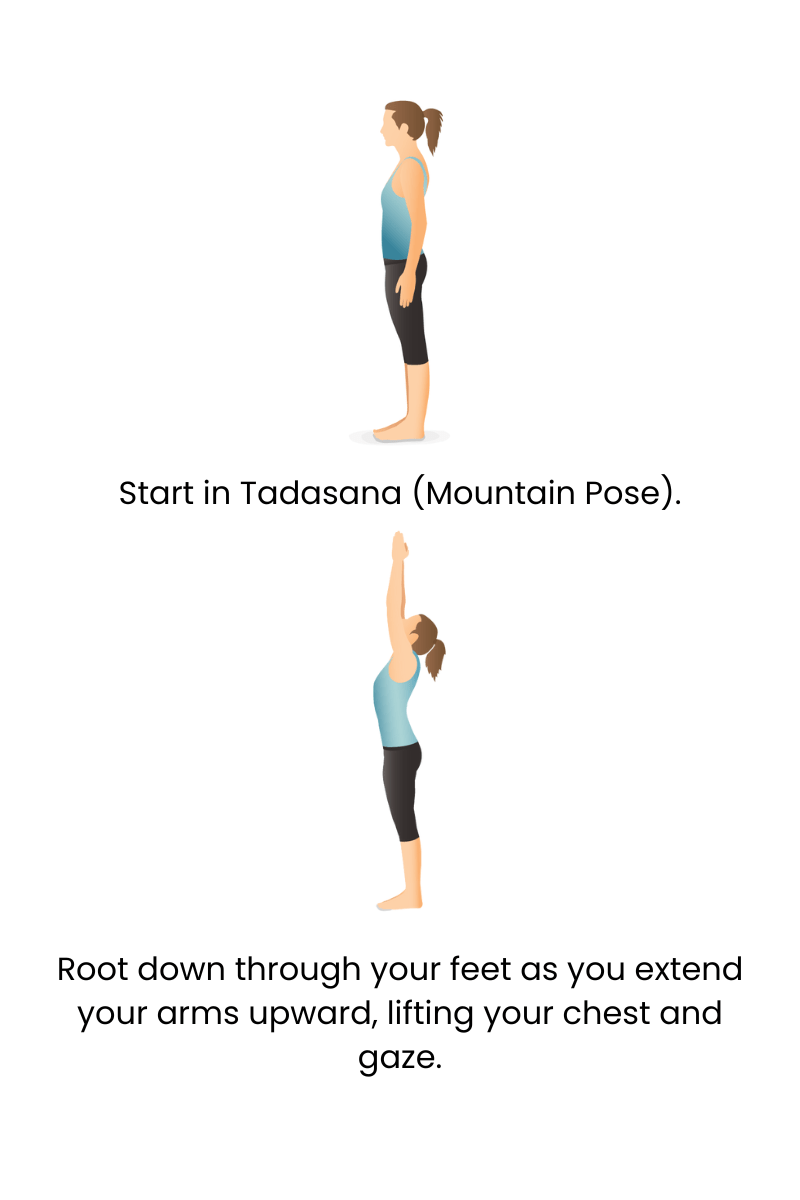What is Upward Hands Pose?
English Name: Upward Hands Pose
Sanskrit Name: Urdhva Hastasana (pronounced OORD-vah hahs-TAHS-uh-nuh)
Category: Standing, Foundational, Gentle, Mood Booster

English Name: Upward Hands Pose
Sanskrit Name: Urdhva Hastasana (pronounced OORD-vah hahs-TAHS-uh-nuh)
Category: Standing, Foundational, Gentle, Mood Booster
Upward Arm Pose, or Urdhva Hastasana, is a foundational standing posture in yoga that involves lifting the arms overhead with an elongated spine and rooted feet. Often practiced at the beginning of Sun Salutations, this pose helps awaken the body, stretch the sides, and cultivate full-body awareness.
Despite its simplicity, Urdhva Hastasana offers a powerful opportunity to integrate breath, posture, and presence. It strengthens posture, encourages openness in the shoulders and chest, and is an excellent transitional pose for flows or morning routines.


Upward Arm Pose may seem simple, but it serves as a powerful bridge between grounding and extension. Whether you’re beginning a flow or pausing for stillness, this pose activates the full body, improves posture, and invites deep, mindful breathing.
It’s a reminder to rise with intention—rooted in the earth and reaching for clarity, vitality, and openness.
Yes, with modifications. If you have shoulder tightness or a history of injury, keep the arms shoulder-width apart or slightly bent. You can also practice with arms at heart center or use “cactus arms” to reduce strain while still getting the benefits of spinal lengthening.
Upward Arm Pose builds directly on Mountain Pose. While Mountain Pose focuses on grounding, alignment, and stability with the arms down, Upward Arm Pose adds a vertical stretch by raising the arms overhead. It’s often used as a transition or energizing variation of Mountain Pose in sequences like Sun Salutations.
Absolutely. Seated versions are great for those with balance issues or limited mobility. Sit tall with feet flat on the floor, then lift your arms overhead as you would standing—keeping the spine long and shoulders relaxed. This makes the pose accessible and effective even at a desk or in restorative practice.

Explore classes & pose tutorials for any style, format, duration or experience level with a free account in the YogaRenew app. Or subscribe and gain access to workshops, live classes and more.